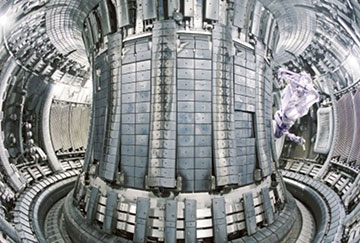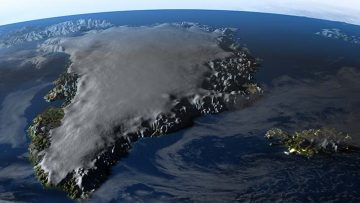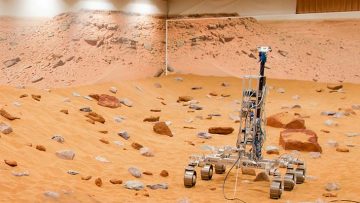 On a crisp, dark evening it is possible to see three thousand stars twinkling across the sky. Far from far-off specks of light, they are cosmic nuclear reactors busy devouring the matter in their cores to produce the energy we see as starlight. Bringing their method of energy production, called fusion, down to Earth would go a long way to solving the planet’s growing energy crisis.
On a crisp, dark evening it is possible to see three thousand stars twinkling across the sky. Far from far-off specks of light, they are cosmic nuclear reactors busy devouring the matter in their cores to produce the energy we see as starlight. Bringing their method of energy production, called fusion, down to Earth would go a long way to solving the planet’s growing energy crisis.
The population of the Earth has rapidly grown in recent decades, hitting seven billion for the first time in 2011; by 2050 it is predicted to reach 9.2 billion. More people means a greater strain on energy resources. With the demand rising, and the supply of fossil fuels decreasing, an energy shortfall is expected to develop. UK mathematicians are working alongside physicists in an attempt to perfect the fusion power stations that may one day plug the gap; 20% of the world’s electricity could be generated from fusion by 2100.
Their work has already achieved Earth-bound fusion: in 1997 the Joint European Torus (JET) machine, housed in the Oxfordshire- based Culham Centre for Fusion Energy, successfully produced sixteen megawatts of fusion power. This is short of the amount required to supply energy to power grids, but it demonstrated it was possible to mimic the Sun and stars.
JET is a “tokamak”, a word that starts to betray the way it works: it is derived from the Russian for “toroidal chamber with magnetic coils”. A 100 cubic metre doughnutshaped cavern, it operates by trapping hot gas in a cage of magnetic fields. The gas is actually a plasma, a sea of charged particles formed by ripping electrons away from their parent atoms. No longer electrically neutral, the plasma feels the confining effect of the magnetic fields. The plasma is comprised of deuterium and tritium, two different varieties of hydrogen.
Once heated to over one hundred million degrees, the deuterium and tritium have sufficient energy to fuse together. This produces helium, a particle called a neutron and some energy. Neutrons are the neutral particles that sit at the heart of most atoms. In a power station, a dense blanket of material would surround the tokamak to slow these fast-moving neutrons down, providing heat that would be converted into steam, in turn driving turbines to produce electricity. In this way, fusion has several advantages.
Unlike fossil fuels there are no carbon emissions – only small amounts of helium are left over. There is also an abundant fuel supply – deuterium can be extracted from water and tritium obtained from lithium which is found in the Earth’s crust. Finally, unlike fission, there is no long-lived radioactive waste and you get a lot more energy out per kilogram of fuel – ten million times as much as fossil fuels.
However, containing a plasma at over one hundred million degrees isn’t without its difficulties; the cage is not perfect and so some of the plasma slips through its magnetic fingers. The fugitive plasma then encounters the wall of the tokamak, which is much cooler, setting up thermal turbulence within the plasma – little eddies which bubble away within it. This causes the plasma to cool. Ideally the energy created by fusion should maintain the plasma’s temperature, enabling fusion to continue without additional energy input. Losing heat to plasma turbulence meant that the 1997 fusion at JET only ran for 5 seconds, creating only as much energy as was supplied.
Reducing the turbulence is one of the many areas mathematics is being used to reach the fusion dream. If the turbulence can be modelled, it can be reduced. However, crunching the equations required to model the behaviour of each of the million billion particles found inside JET is beyond the power of modern computers. Instead, researchers use mathematical tricks to reduce the number of computational steps necessary.
 It was suggested in the 1960s by UK- based researchers that using the theory of gyrokinetics could help. The particles spiral around the magnetic field lines within the tokamak and the mathematics proved that the turbulence associated with a particle at any point along the spiral is the same as the average turbulence over the whole spiral. Armed with that knowledge, equations describing the turbulence could be run using the whole spiral, rather than individual particles, significantly reducing the number of steps in the calculations.
It was suggested in the 1960s by UK- based researchers that using the theory of gyrokinetics could help. The particles spiral around the magnetic field lines within the tokamak and the mathematics proved that the turbulence associated with a particle at any point along the spiral is the same as the average turbulence over the whole spiral. Armed with that knowledge, equations describing the turbulence could be run using the whole spiral, rather than individual particles, significantly reducing the number of steps in the calculations.
Even then computers still aren’t powerful enough to solve the equations for the whole machine at once. Instead a patchwork turbulence map is created by stitching together the solutions to the equations for smaller parts of the machine. Using these maps, researchers at Oxford University have calculated that if the plasma is rotated at just the right speed then the turbulence is minimised and the magnetic field can best contain the plasma. With JET costing around £1 billion to date, it is crucial that mathematics works out the optimum configurations to reduce turbulence – trial and error would be prohibitively expensive.
Using these new mathematically modelled configurations, in the next few years JET will attempt to break its own 1997 world record for fusion power. This is the next step on the road to supplying fusion power to the grid. JET will be testing out new designs in preparation for the next generation of tokamak, called ITER, being built in France. Ten times the volume of JET, it is hoped ITER will produce 500 megawatts of power for 400 seconds, starting in 2019. Mathematical modelling will reduce the turbulence sufficiently enough that ten times more energy will come out of ITER than is put in. This is still not sufficient to pass power to electricity grids but is the intermediate step between JET and DEMO – a demonstration power plant envisaged to come online by 2033.
On an ever more jam-packed planet, the crisis of dwindling energy resources is a fundamental challenge that must be faced. Without mathematics, fusion would have just been left to the stars.
Technical Supplement
Fusion
The exact fusion reaction used in tokamaks like JET and ITER is not identical to that exploited by the Sun. Instead they utilise a fusion reaction where deuterium is fused with tritium to form helium, a neutron and around 17.6 mega- electronvolts of energy.
The trouble is that tritium is very scarce so you have to make it. This is done by bombarding lithium-6 with a neutron to produce helium and tritium. That tritium can then be fused with deuterium, as above, and the extra neutron produced can then bombard more lithium to create more tritium and so on. Once you get the process started you can keep it going.
Modelling turbulence
Modelling the micro-scale turbulence within the plasma requires solving the combination of the collisional Vlasov equations with Maxwell’s equations. The first are differential equations describing the distribution functions of the plasma constituents (charged particles) as they evolve over time. They are also a function of position and velocity. The latter are partial differential equations which are used in this instance to work out the resultant potential fields generated as the plasma constituents evolve.
A gyrokinetic torodial computer code uses simplified Vlasov equations to work out where the charged particles are in phase space, placing them on a grid. The Maxwell’s equations are then solved to calculate the forces those charges experience, due to the resultant potential fields in that area, over a small amount of time – called a time-step. The particles are then moved to new positions based on the forces they feel. The process is then repeated.
The fact the charged particles can be replaced with rings of current – because the average effect of the fields over a magnetic spiral is the same as the effect on the particles at each individual point – dramatically reduces the dimension of the grid. This allows computers to solve the equations more rapidly. As the motion along the magnetic field lines creates a quasi-2D structure in the electrostatic potential, researchers only need to solve Maxwell’s equations on a 2D poloidal plane, simplifying the calculations further.
References
Brizard, A. J., Hahm, T. 2007. Foundations of Non Linear Gyrokinetic Theory. Reviews of Modern Physics, 79.
M Keilhacker et al, ‘High Fusion Performance from Deuterium-Tritium Plasmas in JET’, Nuclear Fusion vol.39 no.2 (1999) p.209
The IMA would like to thank Prof. Steve Cowley, Culham Centre for Fusion Energy, for his help in the preparation of this document.
Printable Version
Download a printable version of this paper here:



